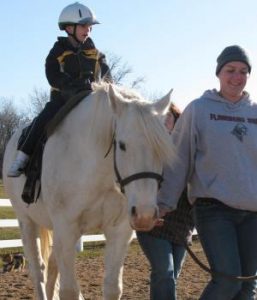 Cerebral palsy (CP) is a disorder that affects muscle tone, movement and motor skills (the ability to move in a coordinated and purposeful way). CP can lead to other health issues, including vision, hearing and speech problems and learning disabilities.
Cerebral palsy (CP) is a disorder that affects muscle tone, movement and motor skills (the ability to move in a coordinated and purposeful way). CP can lead to other health issues, including vision, hearing and speech problems and learning disabilities.
Causes of cerebral palsy
The exact cause of most cases of cerebral palsy is unknown, but it is usually the result of brain damage that occurs before or during a child’s birth (congenital CP) or during the first three to five years of a child’s life. About 70% of children who are diagnosed with congenital CP have it before birth. An additional 20% are diagnosed with congenital CP due to a brain injury during the birthing process.
Brain damage in infancy or early childhood can also lead to CP. In the United States, about 10% of children who have CP acquire the disorder after birth. A baby or toddler might suffer brain damage resulting in CP because of lead poisoning, bacterial meningitis or viral encephalitis, malnutrition, being shaken as an infant (shaken baby syndrome) or being in a car accident while not properly restrained.
Symptoms of cerebral palsy
Cerebral palsy affects muscle control and coordination, so even simple movements — or just standing still — can be difficult. Other vital functions that also involve motor skills and muscles (such as breathing, bladder and bowel control, eating and learning) may also be affected when a child has CP. Children with CP have varying degrees of physical disability. Some have only mild impairment, while others are severely affected. CP may not get worse over time, but the exact symptoms can change over a person’s lifetime.
Treatment and therapy for CP
There is no cure for CP, but treatment, therapy, special equipment and, in some cases, surgery can improve the quality of life for children with CP. In general, the earlier treatment begins, the better the chance the child will have of overcoming developmental disabilities or learning new ways to accomplish the tasks that challenge them.
At Nature’s Edge we find that patients with cerebral palsy respond favorably to the support and instruction we provide to the caregivers as well as the patient. We provide each patient with a home program so that meaningful functional activities can be transitioned from the center to the home with ease.
Cerebral palsy resources
We recommend the following resources for more information on CP:
- www.ucp.org
- www.ninds.nih.gov/disorders/cerebral_palsy/cerebral_palsy.htm
- www.cdc.gov/ncbddd/dd/ddcp.htm
- www.cerebralpalsyguide.com
- www.cerebralpalsyguidance.com
We would be glad to answer any questions you have and discuss therapy options that we offer. Contact Nature’s Edge Therapy Center at no obligation to learn more about cerebral palsy, its symptoms and treatment.

